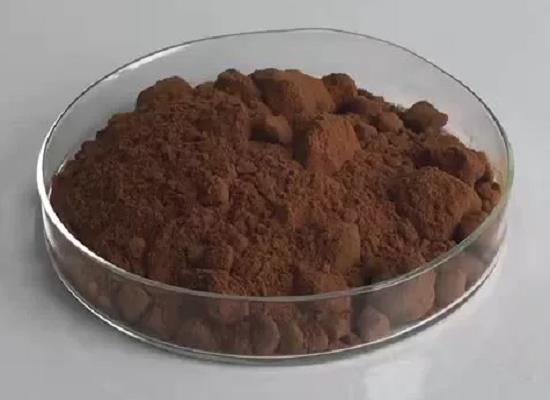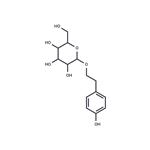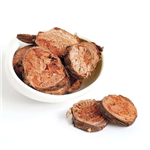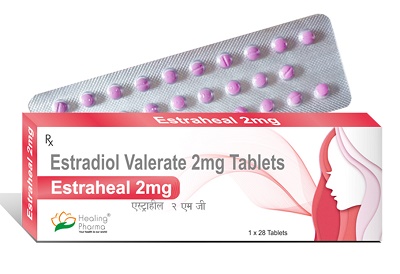Salidroside: mechanism of action, pharmacokinetics and safety
Sep 18,2023
General Description
Salidroside, a compound found in Rhodiola plants, has shown potential as a neuroprotective agent for the treatment of ischemic stroke. It has been found to reduce cerebral infarction, prevent cerebral edema, and improve neurological function. Salidroside's neuroprotective effects are attributed to its ability to inhibit excitotoxicity, oxidative stress, inflammation, apoptosis, and damage to the blood-brain barrier. In terms of pharmacokinetics, Salidroside is rapidly absorbed after oral dosing, primarily distributed in the liver and organs with rich blood flow, and undergoes metabolism in the liver through phase I and phase II reactions. Salidroside is generally considered safe, but caution is advised during pregnancy and when used alongside other medications due to potential drug-drug interactions. Further research is needed to fully understand the safety and potential benefits of Salidroside.

Figure 1. Salidroside
Mechanism of action
Salidroside has shown promise as an effective neuroprotective agent in the treatment of ischemic stroke (IS). IS is a serious condition characterized by cerebral artery stenosis and occlusion, leading to neurological deficits. The major mechanisms contributing to IS include artery embolization, stenosis, and subsequent brain hypoxia or ischemia. Salidroside has been found to have significant neuroprotective effects in animal models of IS. It reduces cerebral infarction, prevents cerebral edema, and improves neurological function. Additionally, Salidroside has demonstrated the ability to prevent memory and learning deficits caused by cerebral hypoxia or hypoperfusion. The main mechanisms of action underlying Salidroside's neuroprotective effects involve its ability to inhibit excitotoxicity, oxidative stress, inflammation, apoptosis, and damage to the blood-brain barrier (BBB). Excitotoxicity refers to the excessive stimulation of neurons, leading to their damage or death. Salidroside helps to regulate this process. It also exhibits antioxidant properties, reducing oxidative stress-induced damage. Furthermore, Salidroside has anti-inflammatory effects and can inhibit apoptotic cell death. It also protects the integrity of the BBB, preventing further damage. Overall, Salidroside shows promise as a potential drug for the treatment of ischemic stroke due to its multifaceted neuroprotective effects. 1
Pharmacokinetics
Salidroside has distinct pharmacokinetic characteristics. It is rapidly absorbed, with peak plasma concentration achieved within 0.5 hours after oral dosing. However, its absolute bioavailability varies in rodents due to different administration routes and doses. Salidroside's absorption is influenced by transport pathways, including the involvement of sodium-dependent glucose cotransporter (SGLT1) in active transport. Competitive inhibition during transport may limit absorption. Although Salidroside has high biological accessibility, its poor membrane permeability results in lower absorption percentages. It is primarily distributed in the liver and organs with rich blood flow. Interestingly, efficient distribution is also observed in tissues like fat, skeletal muscle, ovary, and testis. The liver is the main site of Salidroside metabolism, involving phase I and phase II reactions. Phase I metabolism leads to the formation of aglycone metabolites through deglycosylation, hydroxylation, and dehydrogenation. Phase II metabolism includes sulfation and glucuronidation, where Salidroside conjugates with sulfate and glucuronic acid. Over half of Salidroside undergoes glucuronidation and sulfation after administration. 2
Safety
Salidroside has been extensively studied and is generally considered safe with minimal side effects. Animal experiments and clinical trials have shown that even at high doses, Salidroside does not exhibit genotoxicity in mice. Breast cancer patients treated with Salidroside also experienced no significant adverse events. However, caution is advised when using Salidroside during pregnancy and lactation, as studies have found potential risks such as mild ossification retardation in fetal rats and adverse effects on pregnant and lactating mice and their offspring. Nevertheless, other studies suggest that Salidroside may not be toxic to mothers or embryos. When using Salidroside alongside other drugs, it is important to monitor for potential drug-drug interactions. Salidroside has been found to affect the activity of certain enzymes involved in drug metabolism, but conflicting results exist regarding the inhibitory effects of Rhodiola extracts. Further investigation is needed to fully understand these interactions and evaluate the potential risks of increased drug concentrations when combining Salidroside with other medications. Overall, Salidroside shows promise as a safe natural ingredient, but careful consideration and further research are necessary in specific circumstances. 3
Reference
1. Lai W, Zheng Z, Zhang X, et al. Salidroside-Mediated Neuroprotection is Associated with Induction of Early Growth Response Genes (Egrs) Across a Wide Therapeutic Window. Neurotox Res. 2015;28(2):108-121.
2. Fan F, Yang L, Li R, et al. Salidroside as a potential neuroprotective agent for ischemic stroke: a review of sources, pharmacokinetics, mechanism and safety. Biomed Pharmacother, 2020, 129:110458.
3. Zhou F, Huang W, Li M, Zhong Y, Wang M, Lu B. Bioaccessibility and Absorption Mechanism of Phenylethanoid Glycosides Using Simulated Digestion/Caco-2 Intestinal Cell Models. J Agric Food Chem, 2018, 66(18):4630-4637.
- Related articles
- Related Qustion
- Salidroside:Benefits, Isolation, Purification and Side effects May 9, 2025
Salidroside is a tyrosol found in Rhodiola roseal. (Crassulaceae) with a wide range of pharmacological activities such as anti-inflammatory, antioxidant, anti-aging, anti-apoptotic, neuroprotective, etc.
- Study on pharmacological action and application of salidroside Sep 26, 2024
Salidroside is a natural bioactive component with significant medicinal value. It is mainly extracted from rhodiola plants or synthesized artificially.
- Biological activity of Salidroside Feb 21, 2020
Salidroside is a natural antioxidant extracted from medicinal food plant?Rhodiola rosea and it is a prolyl endopeptidase inhibitor, which has cardioprotective, antidiabetic, antidepressant, anxiolytic, anti-tumor and antioxidant actions.
Diphenylmethane is a colorless liquid with aromatic odor, used in catalytic reactions and sonolysis, but requires caution due to potential irritant effects.....
Sep 18,2023APISalidroside
10338-51-9You may like
- Salidroside
-

- $48.00 / 5mg
- 2025-12-05
- CAS:10338-51-9
- Min. Order:
- Purity: 99.25%
- Supply Ability: 10g
- Rhodioloside
-

- $0.00 / 5g
- 2025-12-05
- CAS:10338-51-9
- Min. Order: 1g
- Purity: 98%
- Supply Ability: 2000
- Salidroside
-

- $999.00/ kg
- 2025-12-03
- CAS:10338-51-9
- Min. Order: 1kg
- Purity: 99%
- Supply Ability: 5000






